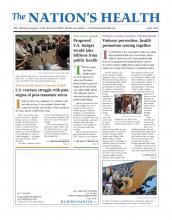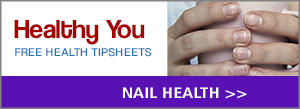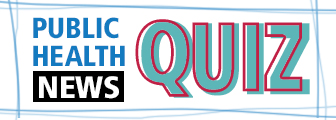At one time or another, most of us have had the unpleasant experience of cutting a finger on the lid of a can and then rushing around the house searching for a bandage. But when such mishaps happen — and they do happen — make sure your home’s first-aid kit is within easy reach.
From scrapes to bruises to headaches, having a well-stocked first-aid kit is a key part of being prepared. Of course, you should always call 911 if you have a medical emergency, but a first-aid kit protects your household by helping you handle common injuries, illnesses and wounds — and even some more serious emergencies — at a moment’s notice. To be prepared for emergencies, the American Red Cross recommends that you keep a first-aid kit in your home and another in your car.
“First-aid kits are important because in some injuries, time is really of the essence,” says Richard Bradley, MD, associate professor of emergency medicine at the University of Texas Health Science Center at Houston. “If someone is bleeding, or if someone is not breathing, you want to be able to start treatment right away.”
Think of your first-aid kit as your home’s first responder, and make sure family members — including your children if you think they’re old enough — and caregivers know where to find it and how to use it. For the kit itself, choose a waterproof container that’s large enough to hold all the items you need. Clear plastic works well because everyone knows at a glance that it’s the home’s first-aid kit.
“It can even be a plastic bag, as long as it’s sturdy and you can find it,” says Bradley, who is a member of the American Red Cross Scientific Advisory Council. “It should be something that you can find quickly and can easily carry to the place that you need it when there’s an emergency.”
Just like the bottled water, batteries and other preparedness supplies you keep on hand for emergencies, check your first-aid kit’s contents every six months and replace any medications — such as ibuprofen or acetaminophen — that have reached their expiration dates, as well as prescriptions that have expired.
“Otherwise, for most of the other things, such as a barrier device for CPR, gloves, dressings and bandages, most of those don’t expire,” Bradley says. “But make sure that the packages are all intact, that nothing has broken down, that packages have not ripped open.”

Art courtesy iStockphoto: mom and kid, Rich Legg
Rips and tears are bad because they can compromise things that are supposed to be sterile, or cause bandages to lose stickiness.
For more information, listen to our interview with Bradley as a podcast: http://goo.gl/EJhtj
Should you just buy a kit?
Your first-aid kit should be tailored to the specific medical needs of your household, but there are some items every first-aid kit should contain, such as a thermometer (see list). Your local drug store should have all the ingredients you’ll need for a basic first-aid kit, and probably sells pre-assembled kits as well in case you don’t want to start from scratch.
“You want to make sure you are looking at a kit that has good ingredients. Not every pre-made kit has good things that are really helpful,” Bradley says.
Essentials that every first-aid kit should contain
The contents of your first-aid kit will vary by your needs but should have all of these basics:
A first-aid manual: So you’ll know how to use the contents of your kit.
Adhesive bandages of assorted sizes: To cover minor cuts and scrapes.
Triangular bandages: To wrap injuries and make an arm sling.
Rolls of gauze and two-inch and four-inch pads: To dress cuts and scrapes.
Sterile scissors: To cut tape, gauze, clothes or other needs.
Adhesive tape: To hold gauze in place when dressing large wounds.
Latex-free gloves: To reduce the risk of infection when treating wounds.
Instant cold compress: For sprains, aches and sore joints.
Thermometer: To monitor your temperature when you feel ill.
Aspirin: In case of chest pain. But read the warnings, especially for children.
What not to include: If you have a bottle of ipecac in your first-aid kit, the American Academy of Pediatrics recommends that you throw it out. For years, doctors told people to keep ipecac handy in case someone ingested a poisonous substance, but that information is outdated.
Instead, Bradley says the first thing to do if someone swallows something that might be poisonous is to call the poison center, which can be reached at 1-800-222-1222. Or call 911.
- Copyright The Nation’s Health, American Public Health Association









